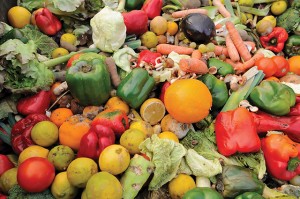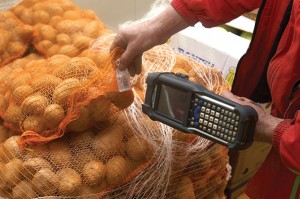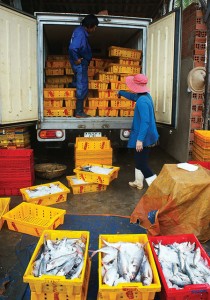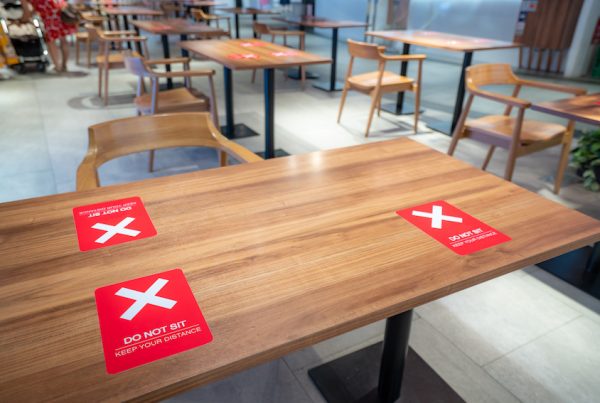In the modern world, eating out has become a lifestyle in many communities. Although a positive sign for the foodservice industry, the problem of food wastage is on the rise. Food waste in the industry is classified as:

> Pre-consumer waste: items from the back of house including trimmings, spoilage, overcooked food, overproduction, contaminated and expired items which also includes unfinished items from salad bars and deli stations.

> Post-consumer waste: “plate waste” or “table scraps” discarded by customers after a purchase. Although restaurants can only do so much to control the amount of table scraps; it can adopt measures to control how it uses produce before they reach the diner’s plate.

Basic practice of 3R’s – Reduce, Reuse and Recycle
• Reduce: Cut down on purchasing products if the amount thrown out is about half the amount purchased. Do up a food waste log which can help in adjusting orders, preparation and menu planning.
• Reuse: Think up creative ways of using leftovers; of course ensuring the end result complies with food safety guidelines. Donate it to a food recovery program who will distribute to those in need. Read about organisations involved in such efforts on page 39.
• Recycle: Separate organic and inorganic waste so that plastic, glass, metal and paper get to the correct recycling facility while organic waste are properly channeled to be turned into an entity with value.
Purchasing
It is best to put one person in charge of buying to avoid double-purchasing and provide a list at each storage area. The list can detail amount-in-stock, date of purchase and do remind staff to update the list whenever an item has been used. Getting stock from your local grocer gets you the freshest produce and deducts the time in packaging and travel which in turn, prolongs the shelf life of produce.
 Storage
Storage
Leafy greens must not be stored near the condenser to prevent freezing while all soft fruits (except banana) and salad items are packed separately and preferably kept in the drawers. The hardy produce can be stored
outside and in wired baskets to allow for circulation that minimises microbial growth. Vacuum packing is an excellent way to prolong freshness and is important for expensive seafood or cuts of meat.
Preparation and cooking
Cooking upon order helps cut down on waste if pre-cooked foods do not get sold within its best by date. If you need to cook in larger batches, a blast chiller is required to bring cooked food to a safe temperature that prevents bacterial growth and food spoilage. Some blast chillers have a memory function that records the different types of products inserted at different times so you know which items should be used first or how long you can still keep them chilled before making a new batch.
Menu
If plates of food regularly return unfinished, shrinking the portions may help. In some places, diners are informed that they could request for extra sides. Think about providing choices of food portions and plan a menu where ingredients can be used in various dishes.
All these steps are necessary in a concerted effort to cut down waste. However, what really happens to the inevitable food waste? Are there better solutions for commercial kitchens; especially high capacity ones to be more conscientious in managing? Next, we explore the possibilities through equipment that can be effective in costs and flow of operations.
 HOW MUCH ARE WE THROWING?
HOW MUCH ARE WE THROWING?
• The average person generates 4.3 pounds of waste per day.
• Worldwide, about 1.3 billion tonnes of food is binned with 40% coming from restaurants, grocers, retailers and consumers.
• 33 million tonnes of food is wasted in USA alone.
• A small nation like Singapore recorded total food wastage that can fill 600 Olympic-sized swimming pools.
A Short Guide to Food Waste Management Best Practices. LeanPath
Creedon, M.,Cunningham,D. & Hogan,J. Less Food Waste, More Profit. A Guide to Minimising Food Waste in the Catering Sector. Clean Technology Centre, Cork Institute of Technology.

http://center.sustainability.duke.edu/resources/green-facts-consumers/how-much-do-wewaste-daily
Gustavson, J., et al. Global Food Losses and Food Waste; Extent, Causes & Prevention.
Food And Agriculture Organization of the United Nations.
http://www.restaurants.com/blog/how-much-dorestaurants-waste/#.UypvaG1KQug
http://wildsingaporenews.blogspot.sg/2013/08/so-muchfood-waste-so-little-recycling.html#.UypvJm1KQug











